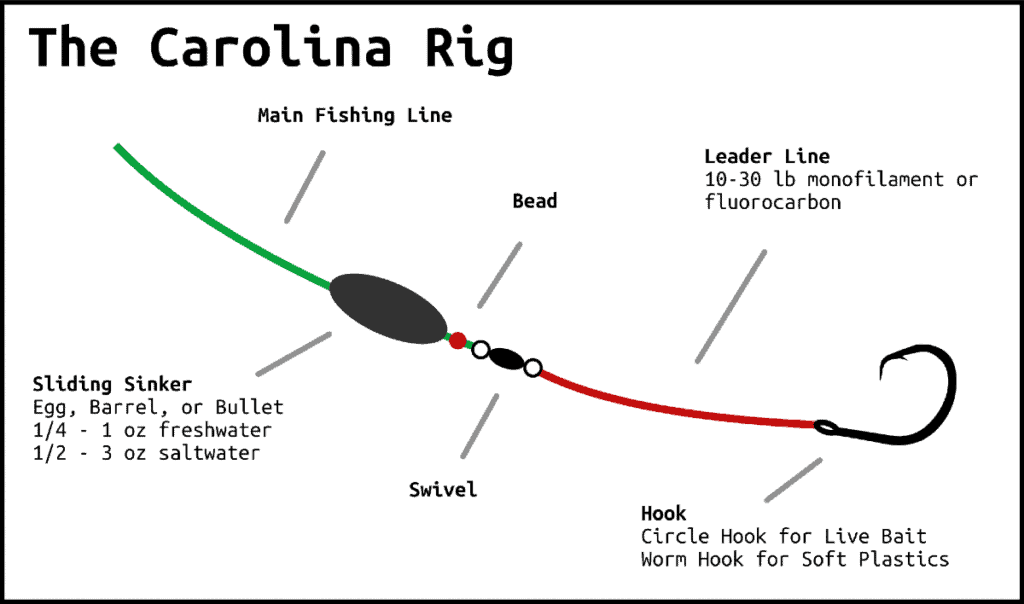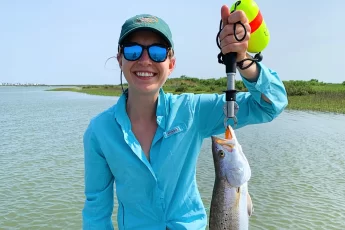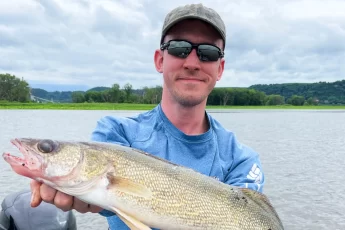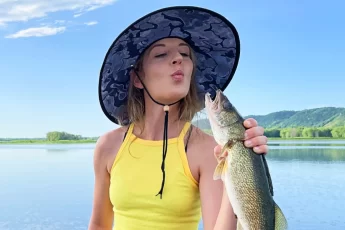If you’ve never caught a smallmouth bass – imagine mother nature strapped a pair of rocket boosters to a muscular football and lit the fuse. Hold on tight!
Smallmouth bass are my favorite freshwater fishing target species. They are aggressive, beautiful, and put up a fight you’d expect from a fish three times their size.
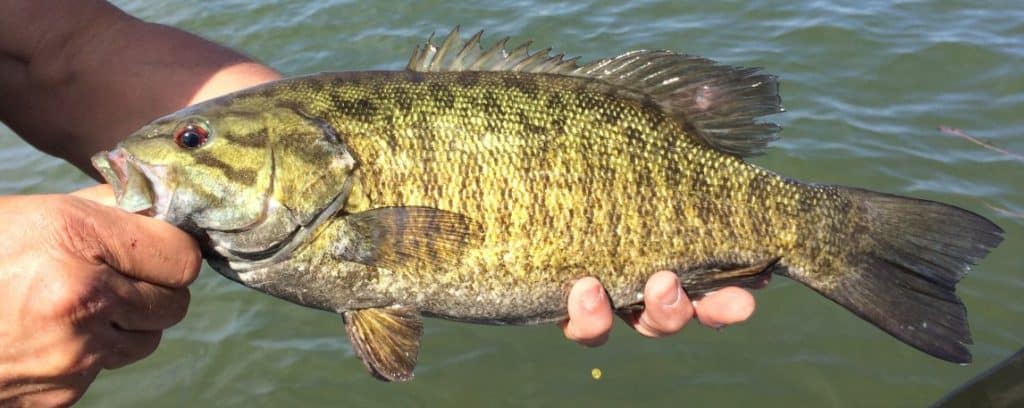
Smallmouth bass are a species worth going out of your way to fish. Read on for 7 smallmouth bass fishing tips to help you find, catch, and appreciate smallmouth bass.
*Disclosure: I only recommend products I would use myself and all opinions expressed here are my own. This post may contain affiliate links that at no additional cost to you, I may earn a small commission.
1. Fish Where They Live
Fish where they live? Seems obvious, but bear with me.
Places like my home state of Texas have attempted smallmouth stocking programs with mixed success. Smallmouth exist in a number of Texas bodies of water, but there is a common theme in Texas that largemouth bass populations dwarf smallmouth bass populations. You CAN catch smallies in Texas, but generally not in great numbers.
If you want to catch smallmouth bass, target where they are naturally prolific.
Smallmouth bass are native to the United States midwest region with instances of man made spread to other parts of the US and the world. In general, the Great Lakes and the surrounding lakes and rivers contain healthy populations of smallmouth bass worth fishing. The USGS has a great map of the smallmouth’s range. Alternatively, you can view my scientific interpretation below:
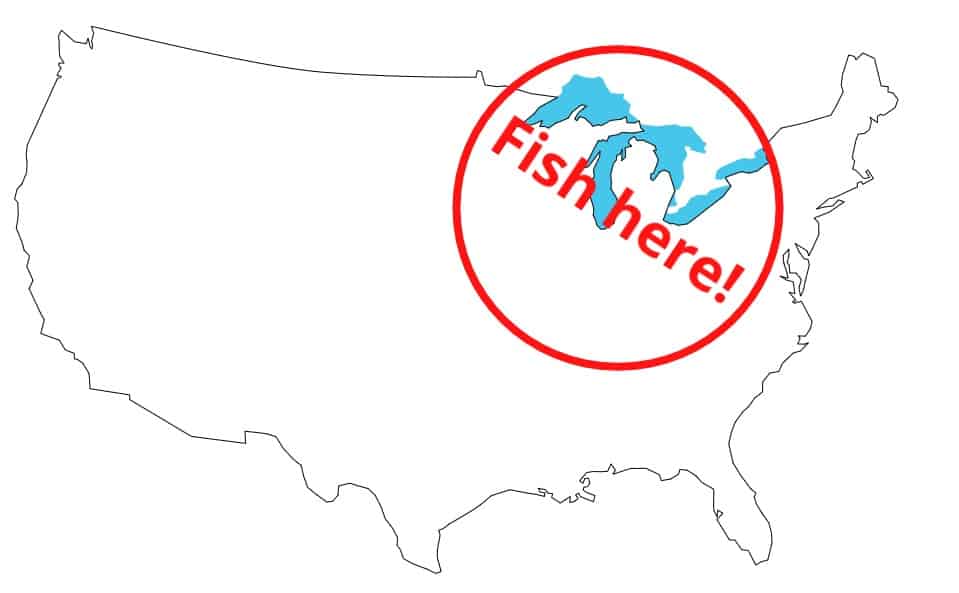
Pro Tip: State DNRs (Departments of Natural Resources) have fish population studies for many fishable bodies of water. Try googling ‘smallmouth bass population study LAKE XYZ’ to see recent information on whether your local body of water has healthy smallmouth populations.
2. Big Water Big Fish
Our second smallmouth bass fishing tip is that larger bodies of water generally hold larger fish! A fair statement for most fish – larger bodies of water provide the space, security, and nutrition to maximize fish growth potential. If you want to catch a lunker smallmouth, don’t fish in the puddle in your backyard!
You really can’t go wrong with the Great Lakes, the upper Mississippi River, and the larger lakes throughout the Midwest if you’re looking for big smallmouth!
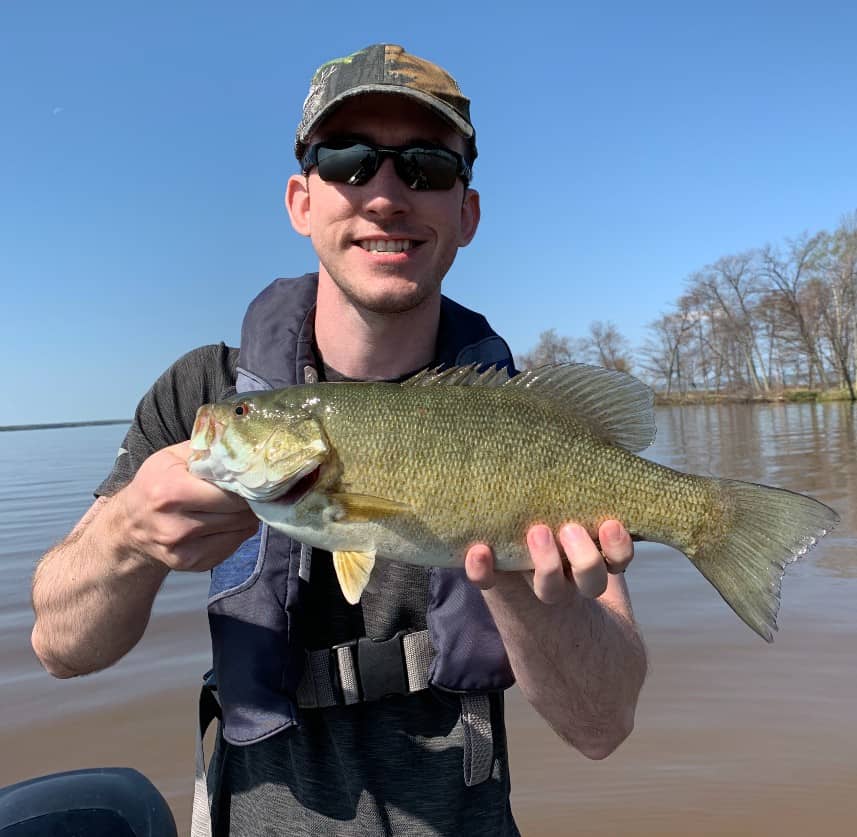
3. Look for Submerged Rocks and Stumps
When I think of smallmouth bass, I think rocks and stumps. Smallies LOVE rocks and stumps.
Our third smallmouth bass fishing tip is to look for submerged wood and rocks. Smallmouth bass and the prey they feed on look for shelter in this underground structure.
Mixed gravel flat with submerged timber? Get the net ready, because it’s on. Rocky point in a stump field near a creek bed bend? Get the backup net ready because you’re going to wear out the primary one.
Pro Tip: Smallmouth bass abide by the 90:10 rule. 90% of the fish are in 10% of the water. Find the mix of cover, find the bass.
4. Bring the Right Bait
Good news. Smallmouth bass are opportunistic feeders and more than willing to aggressively hit a variety of baits. If you find the bass, there’s a good chance they will strike whatever you are throwing.
Our fourth tip is to bring the right bait for the season and water conditions.
Spinnerbaits
My family has great success fishing spinnerbaits shallow during the spawn in Northern Wisconsin. White seems to work well, but honestly when they’re biting we haven’t noticed much bait color preference.
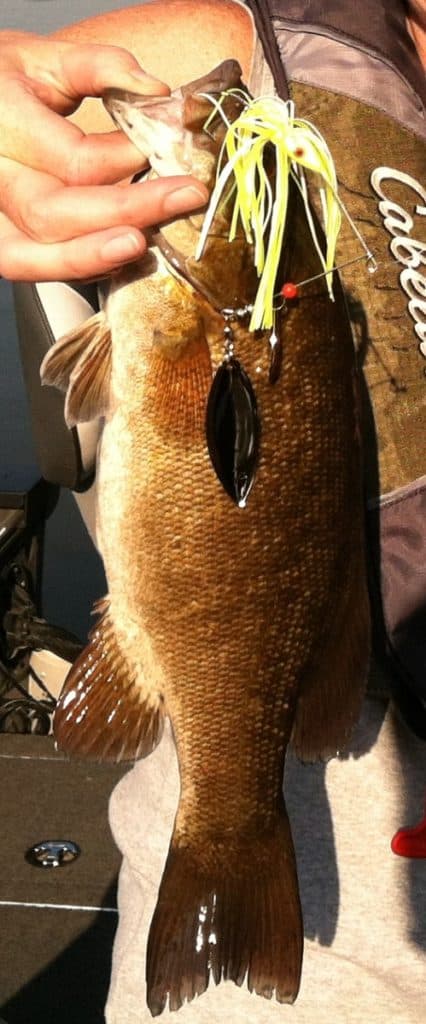
Spinnerbaits are great for pros and beginners alike because they are both effective and easy to fish. They allow you to cover water quickly and they are relatively snag and weed free.
Crankbaits
Up in Chequamegon Bay (Lake Superior), a fishery known for its trophy smallmouth bass, we’ve had success with squarebill crankbaits fished in 3-6’ water over submerged timber.

Pick a crankbait type that dives enough to get you gently in contact with the bottom and start fishing! Fish crankbaits over rocks, points, and submerged timber until you find where the fish are hanging out.
Soft Plastics
Crayfish constitute a large part of many smallmouths’ diet. Crayfish imitations like plastic craw baits on a jig or Carolina Rig can be deadly effective for enticing a bite.
Pro Tip: Match the hatch! If you know what your local fish predominantly feed on, try and match your bait to that food source to encourage strikes.
One of the most effective fishing methods for smallmouth bass is the tube jig. I’m not sure if it resembles nothing, or everything at once, but something about the tube jig seems to drive smallmouth wild.
Tube jigs are worth trying everywhere, but are notably effective on the goby infested Northern lakes where there is an argument that a tube jig resembles both a goby and crawfish cruising across the bottom.
5. Try Live Bait
Our fifth tip is don’t be afraid to try live bait. Many bass anglers only use artificial baits and they may be missing out on some great fishing! Smallmouth bass will strike most types of live bait, including, but not limited to, nightcrawlers, leeches, minnows.
To date, I have personally caught more smallmouth bass on a slip bobber and nightcrawler than every other fishing method combined. I’ve had much better success catching smallmouth bass with live bait than largemouth bass. I am curious if others have had the same experience. Let me know in the comments.
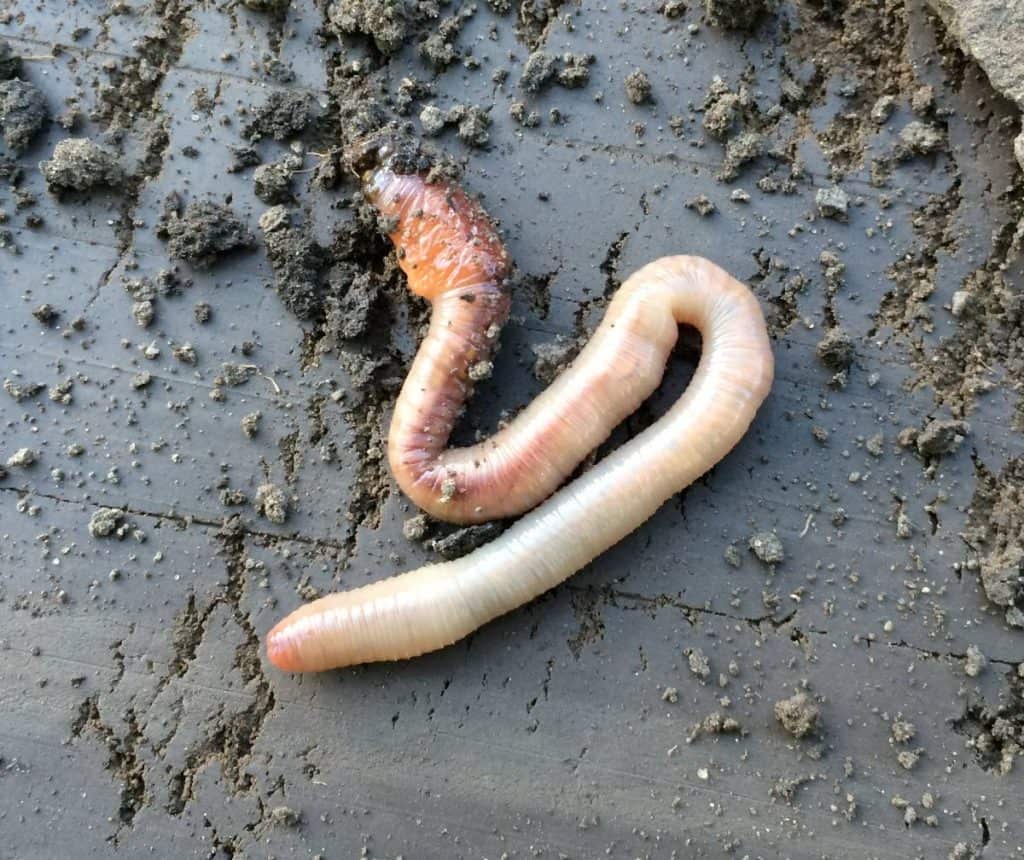
As a young man, we went on a Boy Scout trip to the Turtle Flambeau Flowage in Northern Wisconsin where my cousin and I fished for a week straight from sunup to sundown each day. We would set out in the morning, tie off the boat to a semi-submerged tree or stump, and fish with nightcrawlers on slip bobbers right by the stump we were tied to.
We caught multiple dozens of keeper sized smallmouth (as well as other fish like rock bass and perch) with our newfound stump fishing strategy.
No exaggeration, one mystical, magical stump held 30+ smallies over repeated visits. It was the fishing honey hole that dreams are made of. All caught on nightcrawlers.
6. Be Ready for a Fight!
Our fifth tip is be ready for a fight and bring sturdy, reliable equipment! I said it once and I’ll say it again – Smallmouth bass are fun, tough fish to catch. Smallies fight like I’d expect a rhinoceros would…. if you hooked a rhino and insulted its mother.

Most anglers use medium power fishing rods in the 6’6” to 7’ range for targeting smallmouth bass.
Hook an 18”+ smallmouth bass on a medium light rod and you better hold on tight because you’re going for a ride!
7. Follow Smallmouth Bass Seasonal Habits
Our seventh tip is to follow smallmouth bass seasonal habits. Smallies seasonally favor certain areas. Follow the bass movement to increase your odds of success.
The spring spawn may be the most exciting time to fish for smallmouth (in my book). Once the water reaches 60-64 degrees, smallmouth will be hanging around beds on shallow flats. Can’t go wrong with stumps & gravel in 2-10’!
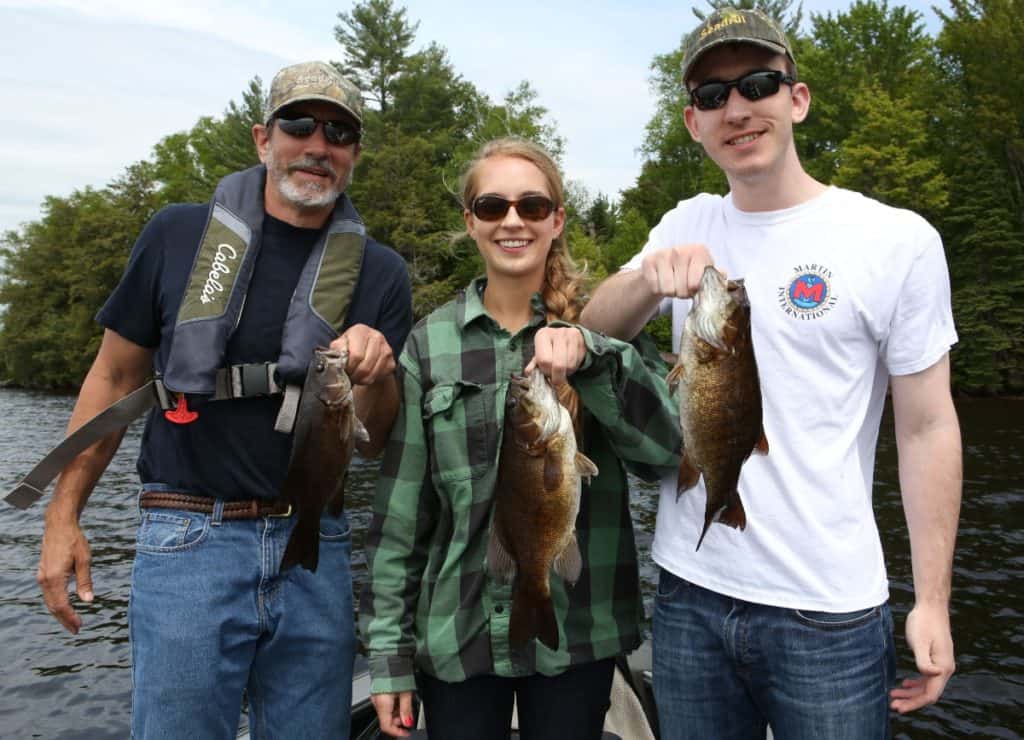
Frequently bronzeback beds will be next to small pieces of cover. Here’s your chance to show off your casting skills because accurately casting near cover will significantly increase your strikes.
The smallmouth spawn occurs between March and June, depending on how quickly your body of water warms up. Up Nort’, we usually see spawning in earnest in late May/early June.
Leading up to the spawn, smallies will be staging in slightly deeper water adjacent to their spawning grounds. Hit these staging points with crankbaits and jigs.
After the spawn, smallmouth will generally be headed for deeper water for the summer. Look for rock humps or other structure in 10-20’.
In the fall – seemingly anything goes, they are catchable both shallow and deep as they fatten up for the winter.
Conclusion
What are you waiting for? Smallmouth fishing is a blast. Get out there and catch some brown bass.
Before you go, make sure to strap on your fishing pliers and pre-tie some Carolina Rigs for your tube jig or craw fishing!
Check out our related articles to ensure you have the right equipment to catch huge smallies!
Rods:
- Best Bass Fishing Rods
- Best Flipping & Pitching Rods
- Best Frog Fishing Rods
- Best Walleye Rods
- Best Ultralight Fishing Rods
Reels
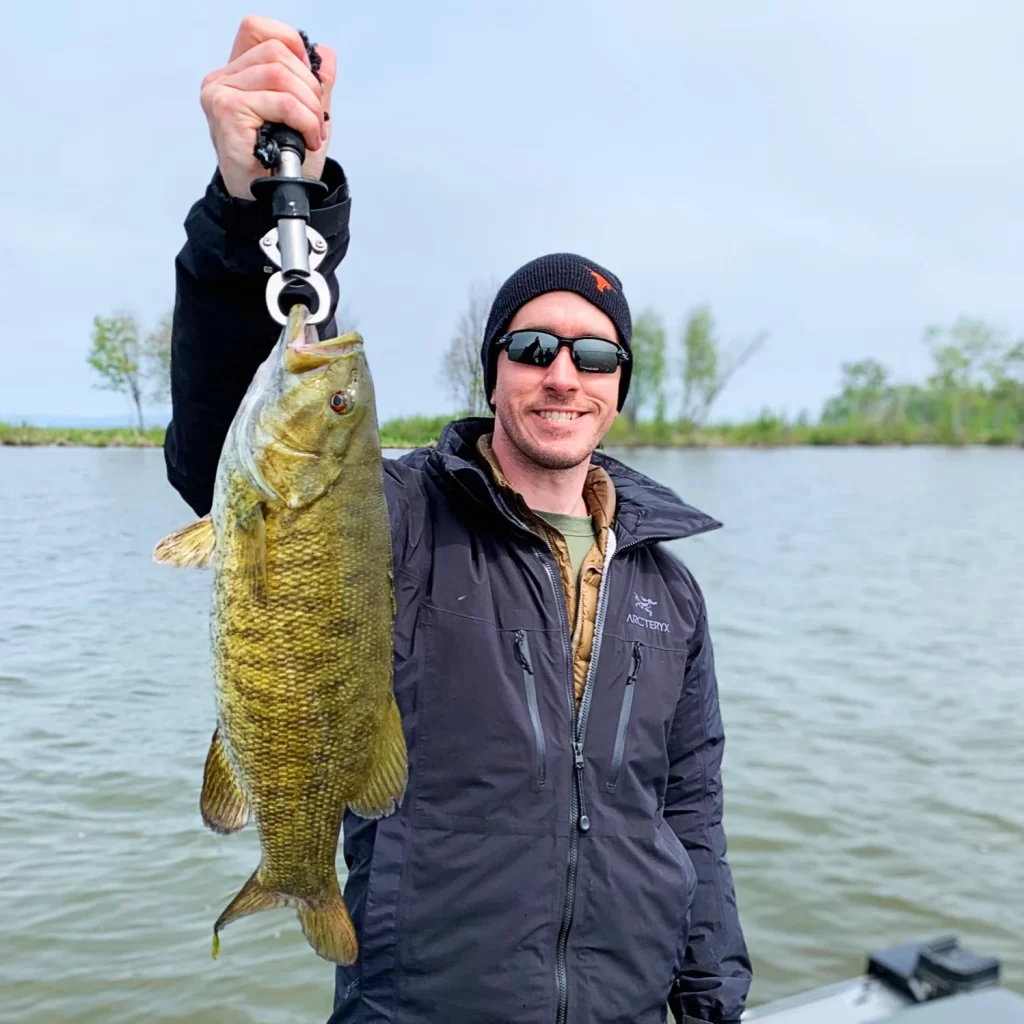
Written By: Andrew Juran
Andrew is a seasoned angler with over 25 years of experience fishing across the United States. He has caught hundreds of smallmouth bass using various techniques and mentored many in the art of fishing. An advocate for sustainable fishing, Andrew is an active member of the Coastal Conservation Association, an organization committed to marine conservation.
For frequent fishing tips, behind-the-scenes looks, and real-time catches, connect with Andrew on Instagram

